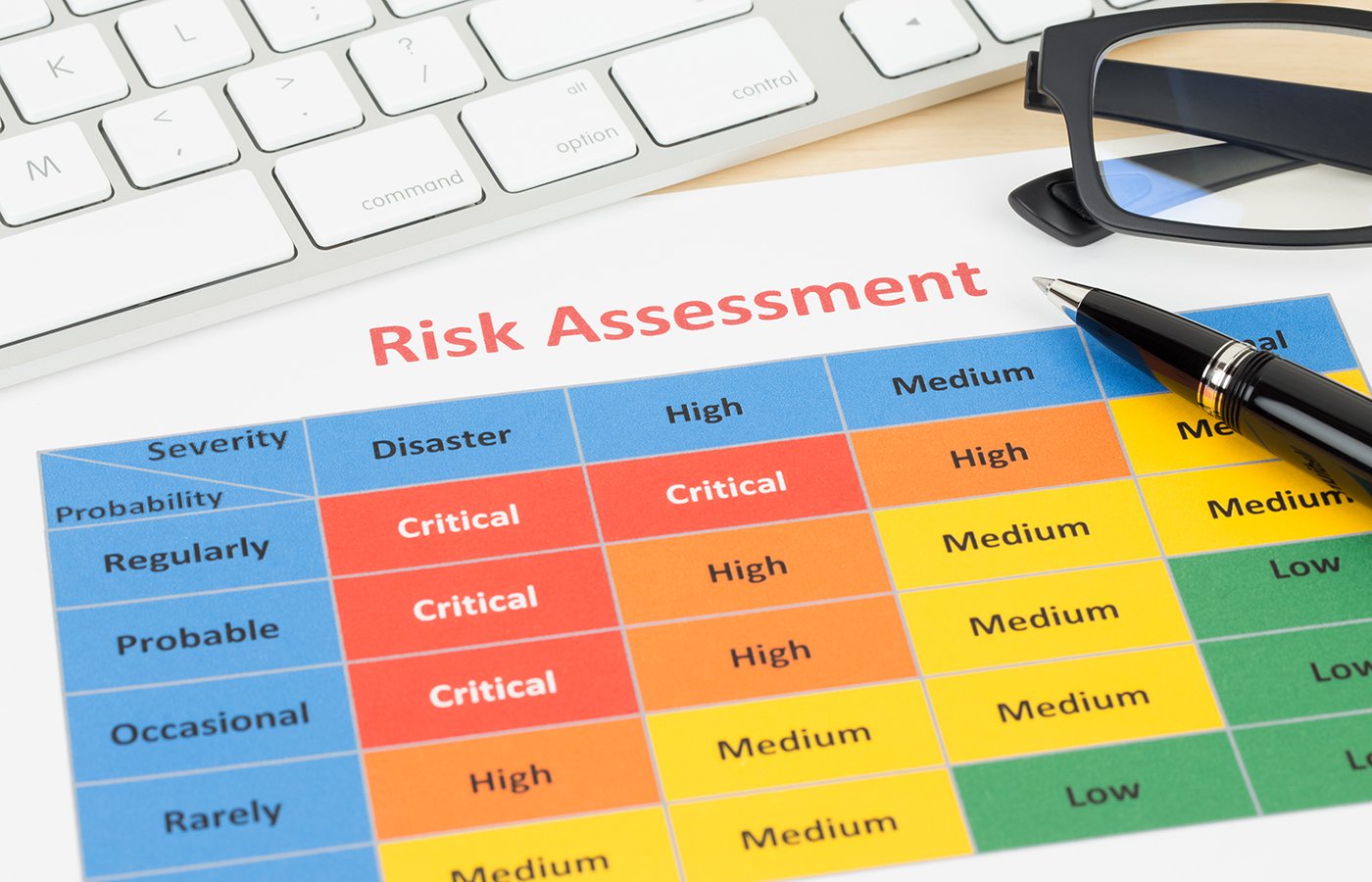Disruptive Technologies
Friday, April 8, 2022
By Peter Horne
The invasion of the Ukraine by the Russian army was a sharp reminder that the world does not let us pause and recover from one crisis before delivering another; it would seem that, unfortunately, global calm is in the fat tails and not the average course of events. As we stand with like-minded people, it is also a reminder that despotic governments are not the representatives of their good people, and that we have many colleagues in the financial and technology communities that are Russian and work with us both in our own countries and from home. No one wins from events like these.
Those living in Western countries are not under despotic rule, and we are going to expect our governments and institutions to take action on our behalf. It is encouraging that we have seen a rapid dissolution of quarrels within and between the countries in the Western alliance to focus on how to deal with both the immediate threat of the Putin regime in Russia, and the strengthened alliance announced at the Beijing Winter Olympics with the Xi regime in China.
The reality of the attack on Ukraine is that it has instantly highlighted that the world has been divided again into two financial and energy blocs. The wealth, resources, technology capacity and institutions of a nation state are the assets of the people in the West, and we can now expect that these will be deployed in varying degrees in the actions taken to punish a misguided attempt to overturn the world order. We are now entering into a period where what, how and to whom capital flows has become an immediate issue at the forefront of the Western world's response to this event.
Exchanges will rise to compliance standards, writes Northfield’s Peter Horne.
Chatter in Cryptosphere
My expertise is in understanding how cryptocurrency technology works and how it is integrated into financial systems. The immediate response in the cryptosphere has been to chatter about how blockchain-based currencies such as ethereum and bitcoin are unstoppable and alternatively a threat or opportunity in this moment, depending on your bias. I thought it would be useful to present a few thoughts to help game out how the world of cryptocurrencies has also changed, and to orient clients should they be faced with pondering existing cryptocurrency risk, or considering good opportunities to take on some more, but with their eyes open.
To recap, the fundamental innovation of the blockchain is that it enables a peer-to-peer network of adversaries to trust a shared financial ledger and perform transactions. The early focus of blockchain value and transactions has been on the value and exchange of the native blockchain cryptocurrencies of BTC and ETH. Native means the currencies hypothecated on the creation of the chains, and their addition through the mining process.
Today, additional value is also hypothecated or bonded to the blockchain through the development of smart contracts, which are programs on the blockchain that implement a distributed version of a custody bank’s unit trust recordkeeping systems.
The convention is to call blockchain-managed units “tokens,” and the trade in these tokens is called decentralized finance, or DeFi. DeFi also includes the management and trade of non-fungible tokens (NFTs), which are similar to custody banks holding property deeds or art works and collectibles. Party-to-party ISDA contracts can also be considered to be a traditional finance (TradFi) instrument that can be dealt with as an NFT on a blockchain system.
Decentralized Autonomous Organizations are simply collectives controlling fungible and non-fungible token smart contracts, and so when you hear “DAO,” just think “a collective that is issuing and managing tokens.” They are of interest to discussions of securities law, but the interesting concepts for payment discussions are the cryptocurrencies and fungible tokens.
At the time of this writing, the notional value locked into native DeFi contracts is $80 billion, the combined value of the top 10 cryptocurrencies is north of $1.5 trillion, and the amount locked into the Coinbase USDC token (one of the U.S. dollar backed tokens) is $53 billion. The NFT market was worth more than $40 billion at the end of 2021. The turnover of exchanges is also huge; Coinbase’s was $547 billion in the last quarter of 2021, and the Uniswap DeFi distributed exchange (DEX) turns over more than $1.2 billion per day.
Can It Be Controlled?
These numbers are clearly significant. Cryptocurrencies and DeFi are both increasingly systemically integrated and important in global capital flows, and have largely been outside of regulations. And so one thing is definitely true: The Ukraine crisis has made the world take crypto more seriously as capital controls are being deployed as a weapon against Russian aggression. The questions being raised are, should it be controlled, can it be controlled, and if it can, what can we consider are possible controls that will be implemented?
I believe that crypto will be and should be controlled. It’s all very well to have an idealistic view of cryptocurrencies, but our world just got real and, in the real world, the financial systems of countries are used as tools to implement policy. Know your client (KYC) and anti-money laundering (AML) rules post-9/11 focused the financial industry on its role in helping to control the funding of terrorism, and the financial exclusion targeted at sanctioned Russian individuals and companies will see that process tighten and sharpen even further.
This means that crypto exchanges can be expected to rise up to the existing standards of compliance and reporting, and be involved in their extension. A crypto account should not be any different to a cash account, and the processes of client management and money transfer should be the same for a crypto exchange as it is for a bank.
The Role of SWIFT
The recent exclusion of Russian banks from the SWIFT international payment network raises some interesting questions and issues for cryptocurrency advocates and exchanges. A reflexive response from those in the idealist/anarchist side of the cryptocurrency community is that crypto can be an alternative as it is unstoppable. We will deal with the unstoppable claim, but first let's look at how SWIFT works and how cryptocurrency exchanges ultimately use this system.
SWIFT is used by regulated member banks. Cryptocurrency exchanges do their international transfers to clients and partners via correspondent banks with access to SWIFT, and these banks are the guardians of access to the system. Any exchange that tries to send unvetted transactions will find that their correspondent banks will vet them for them, and they will be fired as clients if they do not comply.
Similarly, sending cryptocurrency to a person in a country that has a sanctioned banking system means that they can exchange the crypto into local currency, but the exchanges in that country will struggle to set a price because there is no exchange route back to other markets to get price discovery. How many rubles is a BTC worth in Russia if you can’t exchange Russian sourced rubles for USD or EUR? The price of BTC ends up being worth only what it is worth in the Russian market, and the global pricing mechanism fails because the arbitrageurs can’t trade across banned and open jurisdictions. Who wants to send something valuable into a jurisdiction to have its value destroyed, and who will want it coming out if it can be traced at the exchange and show you are breaking sanctions?
The Chinese have an alternative to SWIFT called CIPS; they are mobilizing it with their banks signing on to use it. It remains possible, moreover, that China will try to open up international payments and break sanction controls. But that is a long way away from being meaningful, and it is not assured of working. International banks like their Western banking licenses and will find it hard to sign on to any alternative payment process that breaks sanctions and risks their licenses in the West.
The Reality of Traceability
The crypto idealist/anarchist dream is that blockchains are unstoppable because you can’t control math and peer-to peer-networks, and that cryptocurrency transactions are anonymous. This is naive.
The traceability of cryptocurrency transactions for corporations, and increasingly retail users, is not well understood, but it is very real. Cryptocurrency trades are pseudonymous, not anonymous, which means that they are meaningless transaction identifiers until one side discloses who they are, and then ALL transactions for both parties become traceable. It doesn’t take long for KYC and AML processes to basically disclose enough information for all information to be traceable.
Likewise, the idea that the laws of math give you a pass on the laws of the land is fanciful. The laws of nuclear physics are free to be known, and you can put anything on a presentation slide, but if you swing into action to use that math against a nation state’s interest, you will quickly find that implementation is a different challenge to understanding theory. Wikileaks and torrent sites both use obfuscation and peer-to-peer technology that works, but the discomfort of trying to implement them to break the law is above most people’s pain threshold to operate them, and they can be blocked and excluded from networks.
And let’s not forget that using this technology can become a risk that changes its use. The idealists said that social media tools like Twitter and Facebook could be used to organize the Arab Spring and bring change to the Middle East, but all they did was create call lists for the oppressive regimes to use to tidy up the dissent. Technology is just a tool, and it doesn’t have any magical powers to defend itself on cloud computer networks who can also decide to stop hosting non-compliant cryptocurrency nodes and companies.
“It Can Go in Either Direction”
Finally, some consideration has to be given to how the Ukraine invasion impacts cryptocurrency valuations. When I am asked why did the price of crypto go down, I answer, why do you think it went up? The fact is that I don’t know in either case.
There is a case to be made that if crypto is a USD alternative for stranded Russian oligarchs or international payments, its price will go up with demand. But likewise, if this crisis means the government puts some strict controls around it, it can go down as the demand wanes from that use case.
Then again, it can go in either direction for completely unrelated reasons. The price will do what the price will do, but when it comes to regulation, I believe that be it TradFi or DeFi, the future of all “Fi” is participation in the processes the West implements to make their financial sanctions work. I am still a big fan of the technological innovations of programmable blockchains and the social dynamics of web3. I hope they grow and thrive unhindered for legitimate use cases. But congratulations cryptocurrencies, you are now at the big table, and it’s time to behave that way.
Peter Horne is a senior technology associate at Northfield Information Services, based in Sydney, Australia. He has an extensive fintech background, including being CEO of a publicly traded financial services firm. Among his accomplishments was his 2015 discovery that a prominent brand of laptops were being sold with factory installed spyware. The opinions expressed in this article are his own.
You can find a full, unabridged version of this article in the Northfield News newsletter.
•Bylaws •Code of Conduct •Privacy Notice •Terms of Use © 2024 Global Association of Risk Professionals




